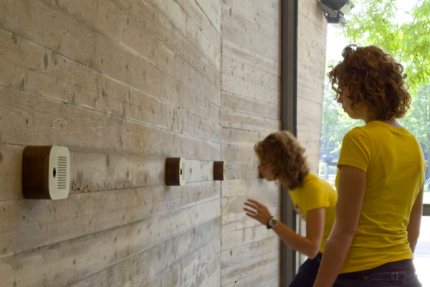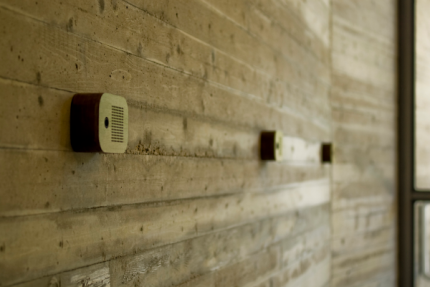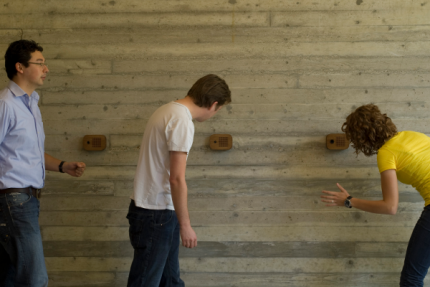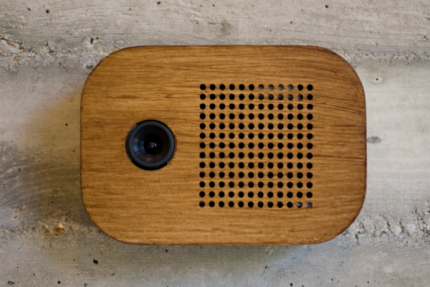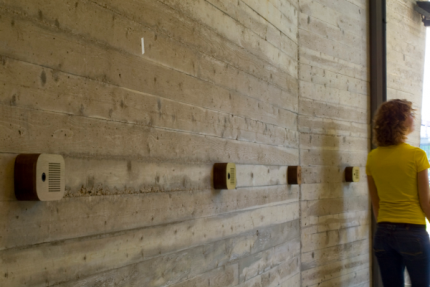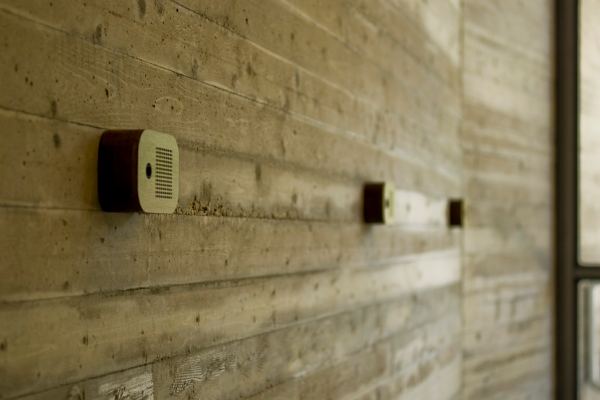Curious-Action Speakers
by Rob Tieben
interactive speakers that elicit repetitive curiosity in public spaces.
Design study during PlayFit project by Rob Tieben.
PROJECT DESCRIPTION
Six interactive speakers with an embedded webcam that transform action into sound output. Using this installation, several interaction scenarios were implemented and evaluated, e.g. when someone would walk through a corridor and pass the speakers, then he/she would hear sounds from each speaker.
The Curious-Action speakers were evaluated in several iterations; first, in informal evaluations in our university, followed by a week long evaluation in another university. All five interaction scenarios elicited curiosity and exploration in different ways, and with varying levels of success. For our goal, target group and context, three curiosity principles showed to be especially powerful: novelty, complexity and uncertainty.
SCENARIO
Wouter and Mark walk through the school to their next lesson. Wouters mentions “Look, what are those?” He walks closer to a speaker, and suddenly a disturbed cow boos. Laughing, Mark walks to another speaker, and discovers a scared chicken. Together, they walk onward, scaring animals while they walk by.
Designer’s pitch
In this project, our goal was to elicit a large change in behaviour with a minimal intervention, in both a design and technological sense. As such, we tried to make the installation as simple yet powerful as possible. Through an iterative process, we designed the speakers: a camera chip from a webcam and a speaker in a small housing. These speakers were connected to a laptop via long cables, allowing us to analyse the presence and gestures of passers-by. Together, the speakers provided a platform for design and evaluation: we could easily program interaction scenarios using Max MSP, and simultaneous observe and record player interaction through the webcam feeds.
Observer’s pitch
The evaluations in this project were explorative: we wanted to discover what factors are important when designing for and evaluating curiosity in public spaces.The challenge was that curious people do all sort of (unexpected) things; this is a quality of emergent play, but it does complicate the evaluation process. Some users started unplugging the cables of the prototypes, to see how they worked in a technical sense; others started investigating the vicinity of the evaluation area, to discover if they were being observed; and yet others installed themselves close to the corridor to warn and explain all passers-by about the installation. This emergent behaviour is a core quality of free play, and we wanted to elicit that – but simultaneously we wanted to perform a proper user evaluation. This experience showed us the necessity of open play/evaluation environments, and therefore the need for open evaluation methods to capture and analyse this free behaviour.
